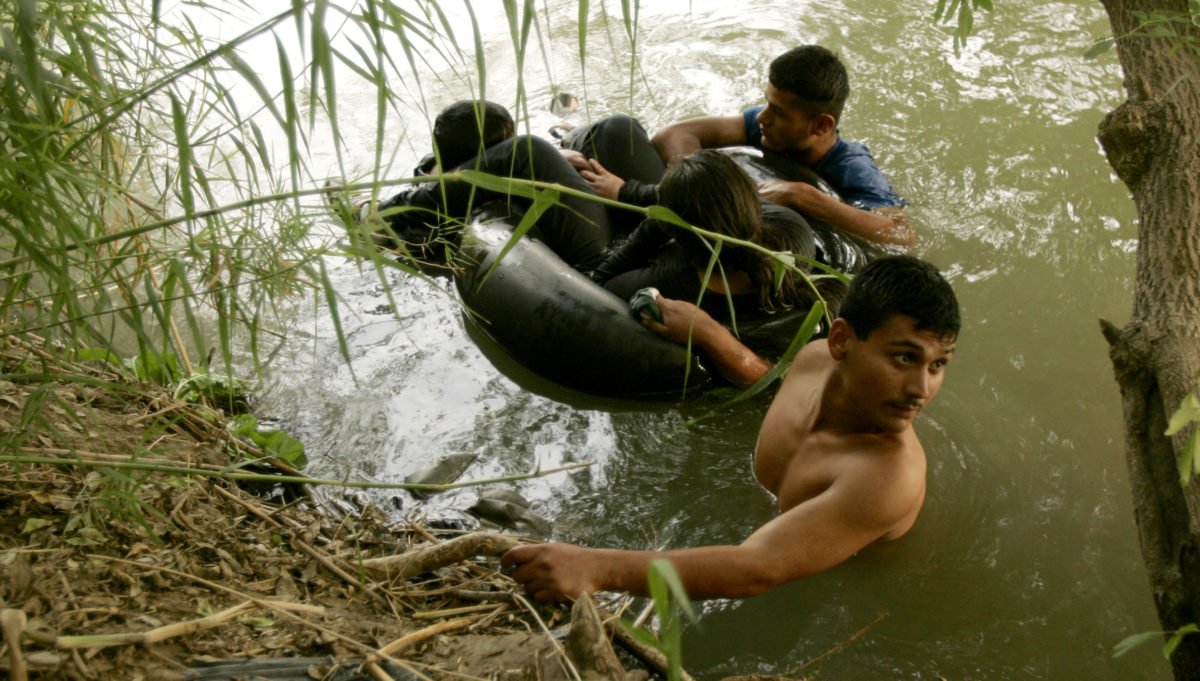Instances of drownings have reportedly tripled in the Del Rio sector along the Rio Grande over the past year, according to data from Customs and Border Protection (CBP).
As drownings have increased along the 210-mile stretch along the Rio Grande, so have the number of water rescues, with a reported 1,000% uptick in fiscal year 2019 for the Del Rio sector, according CNN, which cited CBP data from fiscal year 2018 to 2019.
Newly released data reveals a dramatic shift in a section of the Rio Grande over the past year — and offers a window into the human toll of turmoil at the border https://t.co/GlhPToeOFP
— CNN International (@cnni) October 12, 2019
The Del Rio Sector is a mostly rural region on the Rio Grande, containing the towns of Del Rio and Eagle Pass.
CBP’s count of total water-related deaths in the five sectors that touch the river in fiscal year 2019 amounted to a 4% increase from the previous year, jumping from 46 to 48, according to CBP data, CNN reported. Water-related rescues spiked in the sectors by 650%, increasing from 65 in fiscal year 2018 to 490 in fiscal year 2019.
The reported increase of water-related deaths in the Del Rio sector rose from six in fiscal year 2018 to 18 in fiscal year 2019, according to CNN. The number of water rescues in the sector reportedly rose from 31 in 2018 to 351 in 2019. (RELATED: 10-Month-Old Baby Dies After Migrant Raft Capsized In Rio Grande)

A group of illegal aliens wait on the U.S. side of the Rio Grande river, after floating across in a tire tube, in Laredo, Texas May 2, 2006. U.S. Border Patrol agents intercepted the group and they eventually went back to Mexico. REUTERS/Rick Wilking
Del Rio Sector’s top Border Patrol agent, Chief Raul Ortiz, explained the contributing factors toward rising water deaths and rescues.
The first factor is a spike in 2019 border apprehensions, he told CNN. Over the past year, the total number of apprehensions reportedly increased sharply from 15,000 in fiscal year 2018 to over 50,000 in fiscal year 2019.
“The over 250% increase was dramatic for us,” Ortiz said.
Another factor is the prominence of the Rio Grande through the Del Rio Sector, as well as the variant water levels of the river caused partially by the Amistad Dam, which interrupts the rivers flow near Lake Amistad.
“It becomes a very treacherous area for us,” Ortiz explained.
The third factor is that smugglers are directing migrants through more dangerous routes across the river.
“When they do this, the smugglers don’t put their own lives in danger. They only put the migrants in danger,” Ortiz said. “Quite often when it comes to unaccompanied children and family units, they’ll put them in makeshift rafts, inner tubes, inflatable swimming pools, you name it.”
Christina Patiño Houle, an advocate from the Rio Grande Valley Equal Voice Network, told CNN she’s critical of any CBP statistics, but was not surprised about the numbers on drownings.
“What has resulted from this is people are trying to cross in different ways. People are having to take much more dangerous routes. … It’s so obviously what is happening,” she said. “People are dying because we’re making policies that are killing people.”
A response from CBP will be added should the Daily Caller News Foundation receive one.
All content created by the Daily Caller News Foundation, an independent and nonpartisan newswire service, is available without charge to any legitimate news publisher that can provide a large audience. All republished articles must include our logo, our reporter’s byline and their DCNF affiliation. For any questions about our guidelines or partnering with us, please contact licensing@dailycallernewsfoundation.org.


